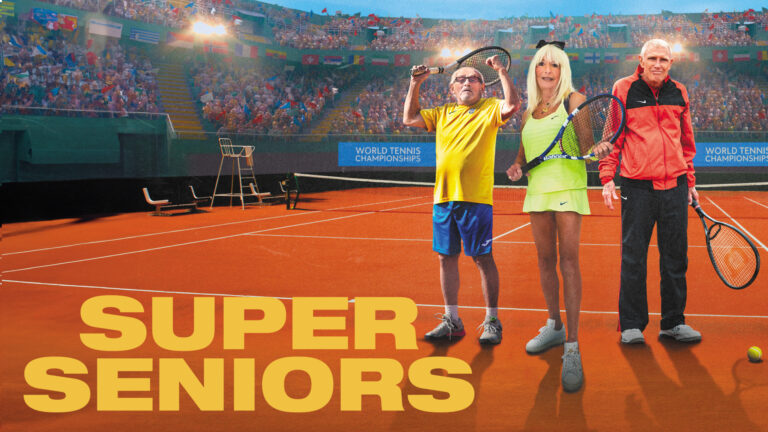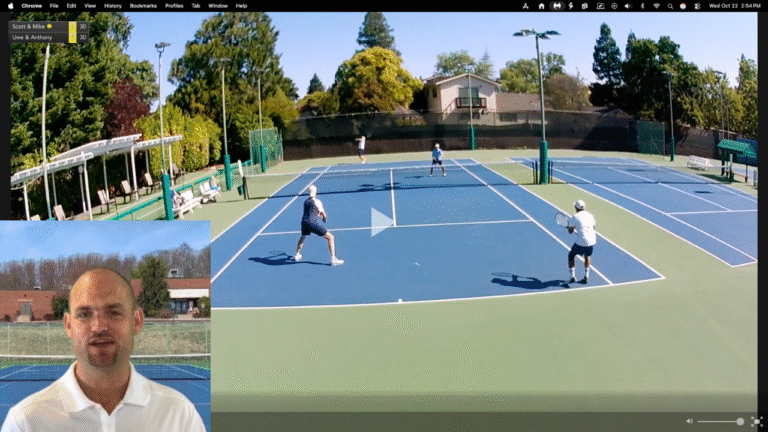Hello fellow senior tennis warriors! Chances are you’ve experienced the highs and lows of trying to close out a match. You know, that glorious moment when you’re ahead, cruising along, and you think, “This one’s in the bag!” Only to find yourself, 60 minutes later, muttering “What just happened?” as you shake hands with your opponent—who probably looks just as surprised as you feel.
Winning a set early can be tricky, especially when you’re a seasoned veteran of overthinking, over-adjusting, and under-performing at just the wrong time. I speak from experience. Today, we’re diving into three classic match-losing mistakes that I (embarrassingly) still make, even when I’m ahead. But don’t worry—I’ll also share how we can fix these blunders and lock in more wins.
Let’s jump in!
Mistake #1: Getting Too Comfortable with the Lead
Ah, the sweet, deceptive comfort of being ahead. You’re a set up, maybe even a break, and you start thinking, “I’ve got this.” The problem? Comfort is like that shady friend who convinces you to have just one more drink—it seems like a good idea at the time, but it almost always backfires.
Why Comfort Becomes a Sneaky Opponent
When you’re winning, it’s easy to let your guard down. You start relaxing on big points, forgetting the hustle and focus that got you ahead in the first place. Suddenly, your opponent has broken back, and you’re wondering how you went from “cruise control” to “what the F just happened?”
How This Looks on Court
- Your footwork gets lazy. Instead of bouncing on your toes, you’re shuffling around like you’re at a slow-paced line-dancing class.
- You start hitting safe, pushed shots instead of your usual confident strokes.
- You pass up kill shots because you don’t want to “risk it.” (Spoiler: playing safe is the real risk.)
How to Fix It
- Stay sharp with a mini-ritual. Whether it’s bouncing the ball a few extra times before serving or taking a deep breath at every changeover, find something to reset your focus.
- Stick to what worked. If your strategy got you the lead, don’t abandon it now. Keep pressing on the patterns that gave you the edge in the first set.
- Talk to yourself. Positive self-talk is underrated. After every changeover, remind yourself: “Stay sharp. Stay aggressive. Keep doing what works.”
Mistake #2: Changing a Winning Game Plan
You’ve got a game plan. It’s working. You’re ahead. So what do you do? Naturally, you decide to change it completely. Because nothing screams “smart decision” like ditching what’s working, right?
The “Switch It Up” Urge
There’s this weird voice in your head that says, “Hey, you’re winning, but wouldn’t it be fun to try something else? Maybe hit a few drop shots or practice your serve-and-volley game?” It feels clever, but all it does is open the door for your opponent to climb back into the match.
Signs You’re Shifting Too Soon
- You’re trying trick shots or serve-and-volley plays for no good reason.
- You’re getting fancy with drop shots and lobs when your opponent hasn’t shown they can handle your consistent baseline play.
- You abandon high-percentage plays to go for highlight-reel winners.
How to Stick to What Works
- Double down on your winning patterns. If your opponent struggles with cross-court forehands or deep topspin shots, keep feeding them those. Don’t overthink it.
- Aim for simple targets. Forget the flashy winners—just focus on safe, effective placements that keep your opponent under pressure.
- Repeat after me: “If it ain’t broke, don’t fix it.” Seriously, it’s that simple.
Mistake #3: Overthinking the Finish Line
You’re up 5-2 in the second set. You’re one game away from victory. The handshake is practically within reach. And then your brain chimes in with, “Don’t choke. Don’t choke. Don’t choke.”
The Inner Chatter Starts
Instead of focusing on the ball, your mind starts racing: “What should I say at the net after I win?” or “How embarrassing will this be if I blow it?” And just like that, you’ve invited your opponent to stage a comeback while you try to quiet the chaos in your head.
How This Trips You Up
- You rush your serves, leading to silly double faults.
- You start playing too safe, hitting short balls that your opponent can attack.
- You glance at the scoreboard every five seconds, as if staring at it will magically end the match faster.
How to Stay in the Now
- Focus on one point at a time. Stop thinking about the set or match. Just play the ball in front of you.
- Use short, simple routines. Between points, take a deep breath, adjust your strings, or bounce the ball. Find something to ground you.
- Celebrate small wins. Did you hit a great serve? Win a long rally? Acknowledge it, even if you still have more work to do. Staying positive will keep your momentum going.
What About You?
I’d love to tell you I’ve completely fixed these mistakes, but the truth is, they still creep up on me from time to time. The difference now is that I’m more aware of them—and hopefully, after reading this, you will be too.
What about you? Have you ever gotten too comfortable with a lead, abandoned a winning game plan, or started overthinking the finish line? (Be honest—we’ve all been there!) Drop a comment and let me know how you’ve handled these moments, or if you’ve got any tips to share.
And if you enjoyed this post, don’t forget to like, share, and subscribe for more senior tennis stories, tips, and a good laugh at my expense. Together, we’ll keep making progress—one point at a time.






